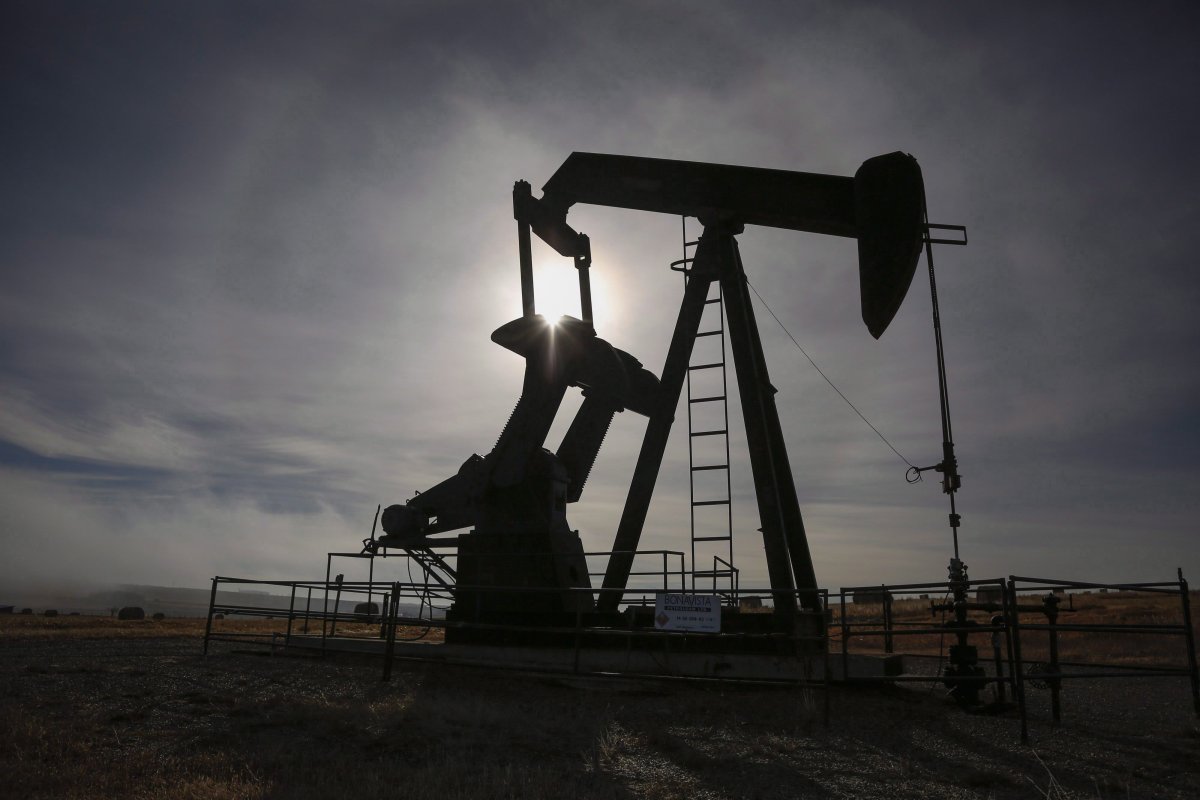Canadian crude oil prices are expected to strengthen and natural gas prices are expected to continue to improve into 2020, according to professional services company Deloitte Canada.

“We’re really expecting 2020 to be a lot more constructive for oil and gas producers here in Canada this year than it was in 2019,” Andrew Botterill, national oil and gas leader with Deloitte Canada and the forecast’s author, told Global News.
“A little bit better on the oil market but for sure better for natural gas.”
In an oil and gas price forecast released Tuesday, Deloitte said it expects Canadian crude prices to rise moderately as a supply glut is drawn down by topped-up takeaway capacity via rail and pipeline, as well as because of the effects of extended production curtailments in Alberta.
“As much as they weren’t necessarily are sought after by industry, [curtailments] were kind of needed,” Botterill said. “And I think we’re going to see those come to an end here in 2020.”
The eight-day CN Rail strike in late November and the 11-day shutdown of the Keystone XL pipeline from a 1.4-million-litre spill in early November increased crude stores, driving down Alberta oil prices and expanding the differential with the price of WTI in 2019.
November’s events also led to the Kenney government to extend production curtailment — initially put in place by the Notley government — to January 2020.
In the forecast, Botterill said curtailment “should have a positive impact on Canadian oil prices.”
Botterill said that with global crude prices sitting around US$55 to US$60, Canadian companies are still able to bring on production.
“We are in a place where there’s a relatively nice balance and we’re able to manage that right now,” the Deloitte partner said. “So that’s why it might be more constructive in oil this year for Canadians with curtailments.
“It’s not that we think it’s going to be on the backs of the dramatic price increase; it’s just going to be in some more stability for Canadian producers.”
Botterill noted that crude debottlenecking projects, like the construction of the federally owned Trans Mountain expansion project and the restoration of Enbridge’s Line 3 pipeline, could add up to 580,000 barrels per day of additional shipping capacity. That represents 10 per cent of Canada’s daily oil production and is about equivalent to the country’s oversupply that dragged down the price of Canuck crude.
“I think seeing those projects go forward starts to create the room that I think we start to see curtailment come off and start to see more constructive conversations about deploying capital,” Botterill said.
Canadian oil producers will be seeing reduced pressures from competition stateside.
The Deloitte forecast said growth in U.S. oil production is slowing while the U.S. Energy Information Administration expects the country to continue as a net exporter of oil in 2020. Lower return on investments in the form of new wells put downward pressure on the oil sector of Canada’s southern neighbour.
U.S. companies are also “feeling the tightening of purse strings as the oil and gas industry continues to receive opposition regarding carbon intensity,” Deloitte said in its forecast.
Natural gas to see extended highs
Natural gas will provide a ray of hope for Canada’s energy sector in 2020, according to Deloitte.
Lower natural gas storage levels have helped boost Alberta’s gas trading prices. Low production levels — stemming from volatile and depressed AECO pricing in 2019 — have helped keep Alberta’s gas supplies low.
“Fortunately for producers, there are signs these higher prices could last beyond the winter months, which could provide some much-needed relief to their balance sheets,” Botterill said.
A glut of U.S. natural gas should allow for more Canadian natural gas to get to market, according to Botterill.
“The major pipeline companies in Canada have been working with producers over the last year on different takeaway capacity and different agreements that I think are going to make Canadian gas prices a lot more competitive,” Botterill said.
The December 2019 Deloitte forecast marks a trimming of its September 2019 expectations in Canadian oil prices from just above US$70 per barrel to just under the US$70 mark, with a modest upward trend through 2023.
However, Deloitte analysts increased their expectations of natural gas from the fall forecast, with increases through 2023.
In December 2018, Botterill estimated conservatively for oil and gas in 2019.
Botterill predicted Edmonton light oil average prices would be US$65.80 per barrel and the commodity outperformed by US$2.98 in 2019.
He overestimated the performance of natural gas, predicting 2019’s average price to be US$1.50 per thousand cubic feet, higher than the actual average of US$1.45.
Leveraging tech and scale
One area Deloitte analysts said Canadian oil and gas companies are not taking full advantage of is embracing digital and innovative programs.
“We don’t expect high commodity prices to return soon so innovations must deliver value at a time of volatility caused by environmental policies and regulator constraints,” Ian Proctor, Deloitte Digital partner, said in a statement.
Proctor pointed to innovations improving health and safety, reducing operating expenses, enabling the workforce and increasing profitability as priorities for the oil and gas sector.
Botterill said junior and intermediate oil producers have recognized the need to join larger companies in leveraging technology to help improve margins.
“They recognize that if they’re going to produce their barrels, they’re going to have to do so at a competitive cost as well and a good margin,” Botterill said.
“Oil and gas companies are quick adapters to technology, especially when it looks to drilling. But I think now a lot of that technology is coming into day-to-day operations, how to focus on margins.”
Botterill said production curtailment has had “a negative effect on the country’s merger and acquisition markets, particularly on prospective deals involving junior and intermediate producers.”
He pointed to the M&A activity totalling just $600 million in the third quarter of 2019, less than 20 per cent of the same activity a year earlier.
Botterill said curtailment put a damper on any interest in mergers and acquisitions.
“It’s a tricky dance that I think comes down to who has capital and can we create situations where shareholders and companies feel that they can make a better vehicle going forward?” Botterill said.








Comments